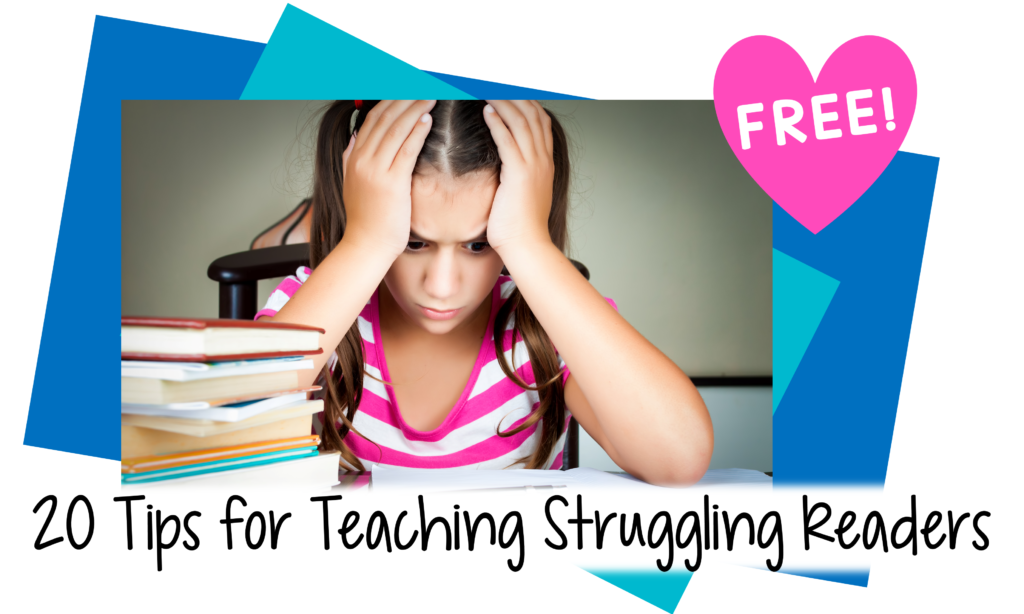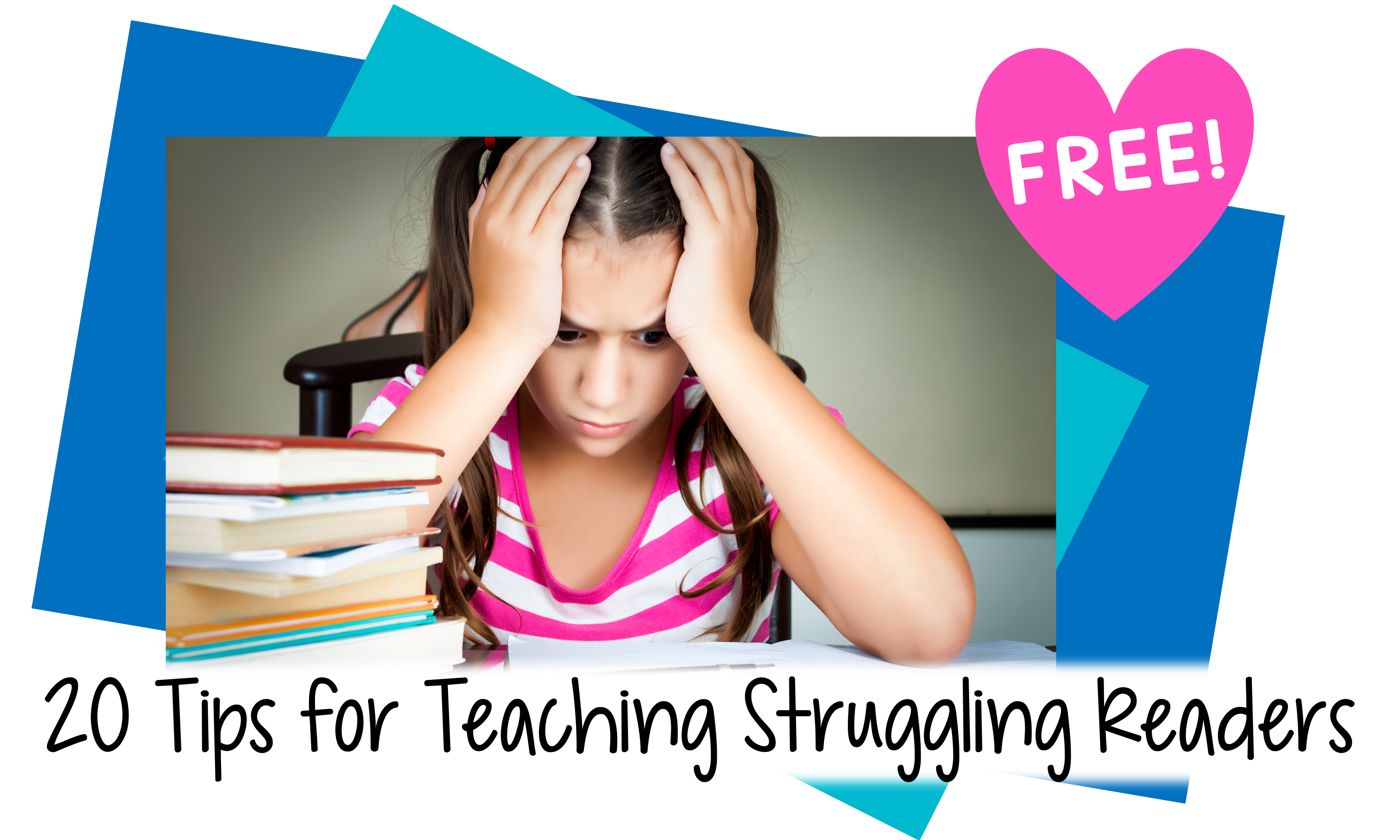Are you teaching a struggling reader right now — one who keeps you up at night, worrying about how to help them?
As teachers, our first impulse is to focus on the child:
- They don’t try hard enough.
- They don’t pay attention.
- They don’t read at home.
- They don’t follow your words of wisdom.
Or we blame the parent:
- They don’t model reading.
- They don’t have books around the house.
- They don’t read with the child.
- They just tell the child the answers.
But we teachers don’t have control over the child or the parent!
Of course you know where I’m going with this. What do we have control over? Ourselves! Our teaching!
So let’s think about what we can do to help the child who is having difficulty learning to read.
- Conduct a diagnostic assessment to determine what the child can do, and what they need. Chart the test results, leaving room for future progress.
- reading level
- grapheme-phoneme relationships
- sight words
- notes about comprehension and fluency
- Amass appropriate instructional and reading materials.
- When you first meet with the child, point out their strengths and share a few goals you have for them.
- Before each lesson, remind the child of their goals and how far they have progressed.
- After each lesson, ask the student to reflect on how they are progressing toward their goals.
- Explain that learning to read is a long process, and that they are well on their way. I like to use a visual ladder as a metaphor for learning to read.
- After a particularly challenging lesson, tell the student that they climbed high on the reading ladder that day.
- Stop calling students struggling readers, and instead think of them as developing readers.
- Don’t just focus on what your student lacks. It’s tempting to focus on their needs, since that’s what you have to teach toward.
- Stay positive to keep your reader confident and motivated!
Now that you have a list of ways to help your struggling reader, you don’t have to stay up at night worrying! Sweet dreams!





Leave a Reply